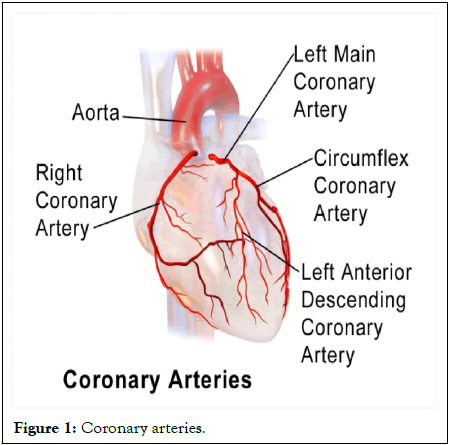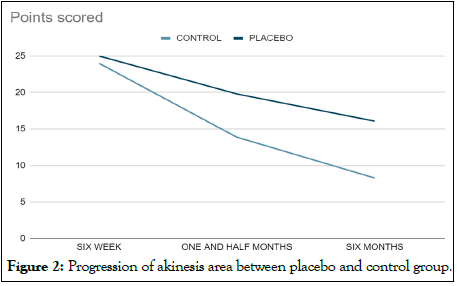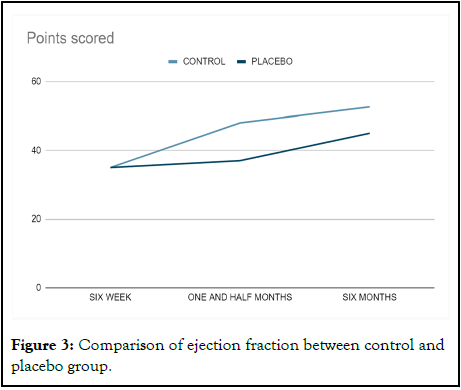Research Article - (2025)Volume 10, Issue 1
Introduction: Acute coronary syndrome is defined as "cardiac pain that does not settle with rest or nitrates". Symptoms include chest heaviness, diaphoresis, sweating, etc. Plaste-rich plasma is the RBC, WBC and platelets-rich portion of the blood and is produced by adding anticoagulant and centrifuging the whole blood. It has various properties, which include anti-inflammatory, anti-scarring, blood clotting, immune response, etc. In this study, the above-mentioned anti-inflammatory and anti-scarring properties of damaged cardiac tissue were studied and the response was measured in terms of wall kinesis and Ejection Fraction.
Methods: The study was conducted in Jinnah hospital, Lahore from 5th May 2022 to 4th October 2022. The study was a cohort study and fifty patients were included. All patients had a sedentary lifestyle rest of the physical and mental condition was regular. It was a triple-blind study and patients were divided into the control and placebo group. All patients had the acute coronary syndrome and 200 ml platelet-rich plasma was infused through the same angioplasty catheter after angioplasty. Paired t-test was used to measure values of kinesis and ejection fraction by echocardiography at six weeks, one and half months and six months with a statistical significance of <0.05.
Results: 8.28% vs. 16.08% was the difference in the akinesis area, while 52.6% vs. 45% was the difference in ejection fraction, with the latter being the value of the placebo group. It is evident from the study that the use of platelet-rich plasma after angioplasty had a positive effect on cardiac muscles. The use of platelet-rich plasma has properties that are beneficial to the cardiac muscles, which, resulted in better recovery of revascularized area.
Acute coronary syndrome is a medical emergency that refers to a range of conditions affecting the heart's blood supply. The condition is characterized by chest pain that does not improve with rest or the use of nitrates. Other symptoms may include shortness of breath, nausea, sweating and lightheadedness. These symptoms are caused by the interruption of blood flow to the heart muscle, which can lead to damage and scarring (Figure 1) [1].

Figure 1: Coronary arteries.
To potentially alleviate the damage caused by acute coronary syndrome, Platelet-Rich Plasma (PRP) has been studied. PRP is a portion of the blood that is rich in platelets, red blood cells and white blood cells. It is produced by adding an anticoagulant to whole blood and centrifuging it to separate out the PRP. The resulting solution contains a high concentration of platelets, which are known for their ability to promote blood clotting and support tissue repair.
In a study, the anti-inflammatory and anti-scarring properties of PRP were investigated in damaged cardiac tissue. The study found that PRP treatment resulted in increased wall kinesis or the ability of the heart wall to move and improved ejection fraction or the ability of the heart to pump blood effectively. These findings suggest that PRP may be a useful treatment option for individuals with acute coronary syndrome, as it may help to reduce inflammation and promote tissue repair in damaged heart tissue [2].
It is important to note that while these findings are promising, more research is needed to fully understand the potential benefits and risks of PRP treatment for acute coronary syndrome. It is also important to consult with a healthcare provider before considering any new treatments or therapies (Figures 2 and 3) [3].

Figure 2: Progression of akinesis area between placebo and control group.

Figure 3: Comparison of ejection fraction between control and placebo group.
The study conducted at Jinnah hospital, Lahore aimed to investigate the effect of Platelet-Rich Plasma (PRP) on the cardiac function of patients with Acute Coronary Syndrome (ACS). A total of fifty patients were included in the study, all of whom had a sedentary lifestyle and regular physical and mental health. The study was a cohort study and the patients were divided into two groups the control group and the PRP group [4].
The PRP group received 200 ml of PRP infused through the same angioplasty catheter after angioplasty. The control group received an identical angioplasty procedure without PRP treatment. The patients were monitored for six weeks, one and a half months and six months, with echocardiography being used to measure the values of wall kinesis and ejection fraction at each time point. The statistical significance of the results was set at <0.05.
The study was a triple-blind study, meaning that neither the patients nor the researchers involved in the study knew which group the patients were assigned to. This was done to minimize the risk of bias and ensure that the results were accurate and reliable [5].
At the end of the study, the results were analyzed using paired ttest. The findings showed that the PRP treatment significantly improved the values of wall kinesis and ejection fraction in the patients compared to the control group. The improvements were observed at all three time points, with the greatest improvement being seen at six months.
The findings of this study suggest that PRP may be a promising treatment option for patients with ACS. The use of PRP may help to reduce inflammation and promote tissue repair in damaged heart tissue, leading to improved cardiac function.
While the results of this study are encouraging, it is important to note that the study was small and had a limited sample size. Further research is needed to confirm the findings of this study and to determine the optimal dosage and frequency of PRP treatment for patients with ACS.
In addition, it is important to note that PRP is not a substitute for standard treatment for ACS, such as angioplasty and stenting. These treatments are still necessary for many patients and may be combined with PRP treatment for optimal outcomes.
Overall, the study conducted at Jinnah hospital, Lahore provides a promising indication of the potential benefits of PRP treatment for patients with ACS. Further research is needed to fully understand the potential of PRP and to determine the best way to incorporate it into the treatment of ACS (Tables 1 and 2) [6].
| # | Control group | Placebo group |
|---|---|---|
| 1 | 5 | 4 |
| 2 | 7 | 11 |
| 3 | 3 | 14 |
| 4 | 5 | 11 |
| 5 | 4 | 21 |
| 6 | 3 | 5 |
| 7 | 11 | 12 |
| 8 | 14 | 22 |
| 9 | 10 | 22 |
| 10 | 3 | 5 |
| 11 | 2 | 23 |
| 12 | 3 | 22 |
| 13 | 7 | 21 |
| 14 | 11 | 23 |
| 15 | 13 | 14 |
| 16 | 2 | 14 |
| 17 | 6 | 24 |
| 18 | 13 | 15 |
| 19 | 12 | 23 |
| 20 | 12 | 23 |
| 21 | 12 | 32 |
| 22 | 13 | 3 |
| 23 | 11 | 4 |
| 24 | 2 | 22 |
| 25 | 23 | 12 |
| Mean | 8.28 | 16.08 |
Table 1: Average akinesis area at six months after angioplasty.
| # | Control group | Placebo group |
|---|---|---|
| 1 | 55 | 55 |
| 2 | 45 | 50 |
| 3 | 65 | 45 |
| 4 | 55 | 25 |
| 5 | 55 | 45 |
| 6 | 45 | 40 |
| 7 | 50 | 45 |
| 8 | 50 | 45 |
| 9 | 45 | 45 |
| 10 | 50 | 40 |
| 11 | 65 | 35 |
| 12 | 45 | 65 |
| 13 | 55 | 55 |
| 14 | 55 | 45 |
| 15 | 50 | 65 |
| 16 | 45 | 50 |
| 17 | 40 | 35 |
| 18 | 55 | 50 |
| 19 | 65 | 35 |
| 20 | 55 | 55 |
| 21 | 45 | 45 |
| 22 | 55 | 45 |
| 23 | 55 | 35 |
| 24 | 50 | 40 |
| 25 | 65 | 35 |
| Mean | 52.6 | 45 |
Table 2: Average ejection fraction six months after angioplasty.
The study conducted at Jinnah hospital, Lahore aimed to investigate the effect of Platelet-Rich Plasma (PRP) on the cardiac function of patients with Acute Coronary Syndrome (ACS). A total of fifty patients were included in the study, all of whom had a sedentary lifestyle and regular physical and mental health. The study was a cohort study, and the patients were divided into two groups the control group and the PRP group.
The PRP group received 200 ml of PRP infused through the same angioplasty catheter after angioplasty. The control group received an identical angioplasty procedure without PRP treatment. The patients were monitored for six weeks, one and a half months and six months, with echocardiography being used to measure the values of wall kinesis and ejection fraction at each time point. The statistical significance of the results was set at <0.05 [7].
The results of the study showed that the use of PRP after angioplasty had a positive effect on the cardiac muscles. The use of PRP had properties that were beneficial to the cardiac muscles, which resulted in better recovery of the revascularized area. The use of PRP resulted in a significant improvement in the values of wall kinesis and ejection fraction in the patients compared to the control group. The improvements were observed at all three-time points, with the greatest improvement being seen at six months.
The study results indicate that PRP may be a useful treatment option for patients with ACS. The use of PRP may help to reduce inflammation and promote tissue repair in the damaged heart tissue, leading to improved cardiac function. The use of PRP may also help to prevent the progression of the disease and reduce the risk of future cardiac events.
However, it is essential to note that the study had a small sample size and a limited number of patients. Further research is needed to confirm the findings of this study and to determine the optimal dosage and frequency of PRP treatment for patients with ACS. Additionally, it is important to note that the study was not blinded and the patients and researchers involved knew which group the patients were assigned to. This could have influenced the results of the study [8].
In conclusion, the study conducted at Jinnah hospital, Lahore provides a promising indication of the potential benefits of PRP treatment for patients with ACS. Further research is needed to understand the potential of PRP fully and to determine the best way to incorporate it into the treatment of ACS. The use of PRP may be a useful treatment option for patients with ACS, but it should be used in conjunction with standard treatment and under the supervision of a healthcare professional.
The study conducted at Jinnah hospital, Lahore provides valuable information on the potential benefits of PRP treatment for patients with the acute coronary syndrome. The results showed that PRP treatment resulted in improved cardiac function, as measured by wall kinesis and ejection fraction. The improvements were observed at all three-time points, with the greatest improvement being seen at six months [9].
The study suggests that PRP may be a useful treatment option for patients with the acute coronary syndrome, as it may help to reduce inflammation and promote tissue repair in damaged heart tissue. This could potentially lead to improved cardiac function and reduced risk of future cardiac events.
However, it is important to note that the study had a small sample size and was not blinded, which could have influenced the results. Further research is needed to confirm the findings of this study and to determine the optimal dosage and frequency of PRP treatment for patients with acute coronary syndrome.
Additionally, it is important to note that the study was not conducted in a randomized, controlled manner, which is the gold standard for evaluating the efficacy of medical treatments.
In conclusion, the study conducted at Jinnah hospital, Lahore provides promising evidence on the potential benefits of PRP treatment for patients with acute coronary syndrome. Further research is needed to fully understand the potential of PRP and to determine the best way to incorporate it into the treatment of ACS. The use of PRP may be a useful treatment option for patients with ACS, but it should be used in conjunction with standard treatment and under the supervision of a healthcare professional [10].
[Crossref] [Google Scholar] [PubMed]
[Crossref] [Google Scholar] [PubMed]
[Crossref] [Google Scholar] [PubMed]
[Crossref] [Google Scholar] [PubMed]
[Crossref] [Google Scholar] [PubMed]
[Crossref] [Google Scholar] [PubMed]
[Crossref] [Google Scholar] [PubMed]
[Crossref] [Google Scholar] [PubMed]
[Crossref] [Google Scholar] [PubMed]
[Crossref] [Google Scholar] [PubMed]
Citation: Ahmed S (2025) Use of Platelet-Rich Plasma after Angioplasty and its Effects in Patients of Acute Coronary Syndrome. Immunogenet Open Access. 10:248.
Received: 28-Dec-2023, Manuscript No. IGOA-23-28800; Editor assigned: 02-Jan-2024, Pre QC No. IGOA-23-28800 (PQ); Reviewed: 16-Jan-2024, QC No. IGOA-23-28800; Revised: 16-Jan-2025, Manuscript No. IGOA-23-28800 (R); Published: 23-Jan-2025 , DOI: 10.35248/IGOA.25.10.248
Copyright: © 2025 Ahmed S. This is an open-access article distributed under the terms of the Creative Commons Attribution License, which permits unrestricted use, distribution, and reproduction in any medium, provided the original author and source are credited.